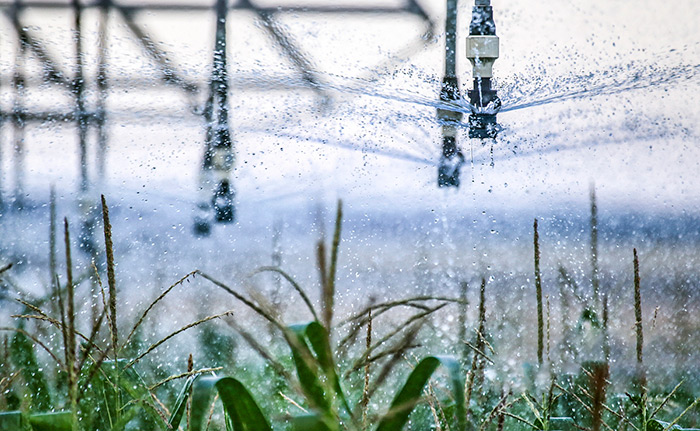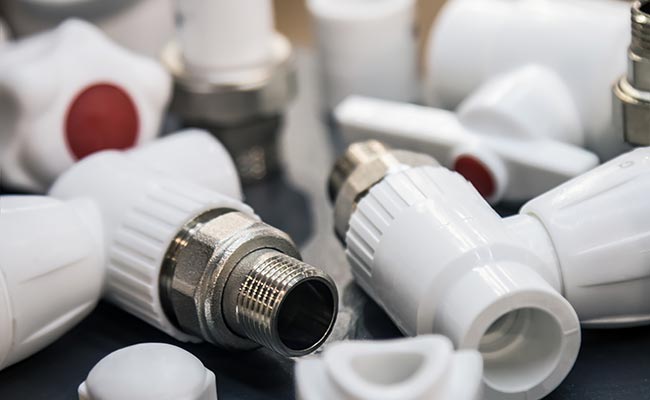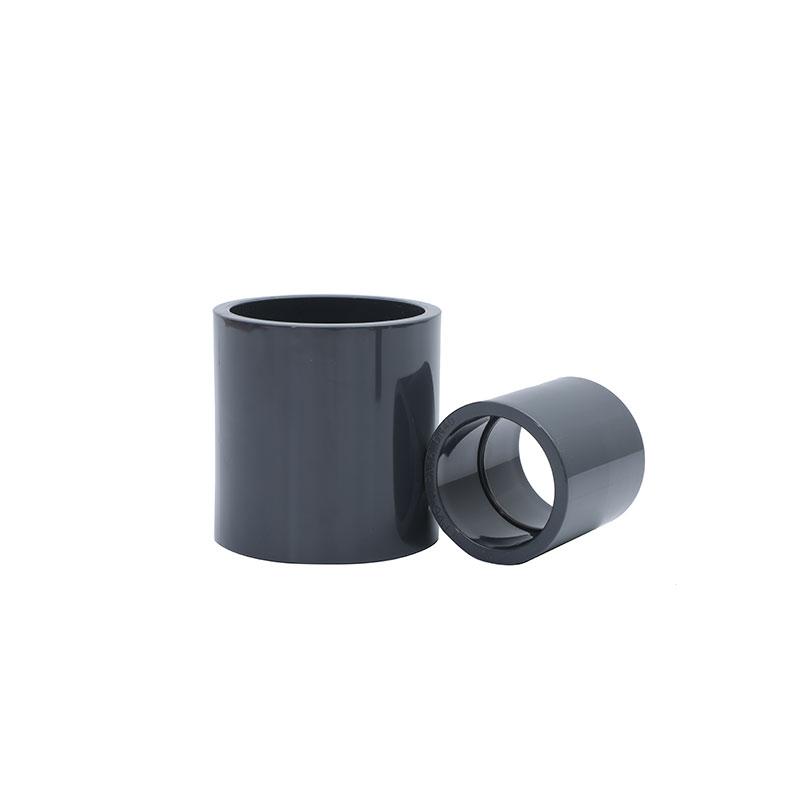
UPVC Fittings Socket ist die erste Wahl für Wasserversorgungssysteme. Es ist korrosionsbeständig, sichert Trinkwasser und lässt sich schnell installieren. Hausbesitzer und Profis vertrauen dieser Lösung aufgrund ihrer leckagefreien Verbindungen und ihrer langlebigen Festigkeit. Anwender profitieren täglich von geringem Wartungsaufwand und zuverlässiger Leistung.
Die wichtigsten Erkenntnisse
- UPVC-Fittings-Sockel bieten eine hohe Korrosions- und Chemikalienbeständigkeit und gewährleisten langlebige, leckagefreie Wasserversorgungssysteme, die sicher und zuverlässig bleiben.
- Die Armaturen sind aufgrund ihrer leichten Bauweise und des einfachen Verbindungsprozesses leicht zu installieren, was bei jedem Sanitärprojekt Zeit spart und die Arbeitskosten senkt.
- Auswahlzertifizierte UPVC-Fittings-Buchsegarantiert sicheres Trinkwasser, dauerhafte Leistung und Kosteneinsparungen im Laufe der Zeit durch geringen Wartungsaufwand und lange Lebensdauer.
Hauptvorteile der UPVC-Fittings-Steckdose
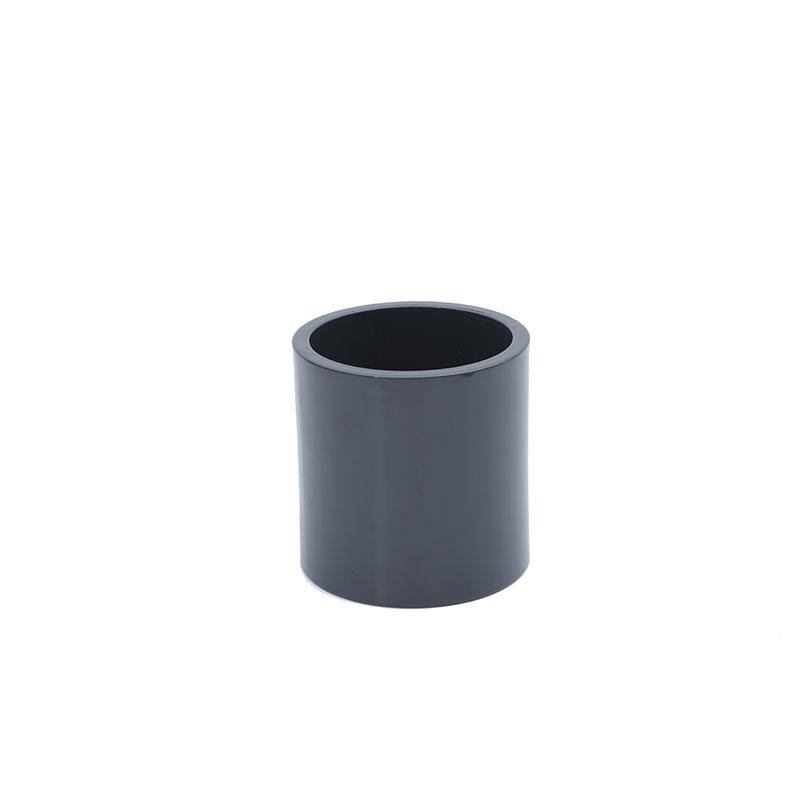
Korrosions- und Chemikalienbeständigkeit
UPVC-Fittings Socket zeichnen sich durch ihre beeindruckende Korrosions- und Chemikalienbeständigkeit aus. Das Material rostet nicht und zersetzt sich nicht bei Kontakt mit Wasser, Säuren oder Laugen. Dies macht es zu einer zuverlässigen Wahl für Wasserversorgungssysteme, die eine lange Lebensdauer erfordern. Branchenstudien bestätigen, dass UPVC-Fittings strengen Tests auf chemische Beständigkeit unterzogen werden. Diese Tests umfassen den Kontakt mit aggressiven Flüssigkeiten und rauen Umgebungen und stellen so sicher, dass die Fittings ihre Integrität behalten. Der Harrington Industrial Plastics Chemical Resistance Guide zeigt, dass UPVC vielen gängigen Chemikalien wie Salzsäure und Natriumhydroxid gut standhält. Diese Beständigkeit schützt Wasserversorgungssysteme vor Lecks und korrosionsbedingten Ausfällen.
| Chemischer Name | UPVC-Kompatibilität |
|---|---|
| Salzsäure (30%) | Empfohlen |
| Salpetersäure (5% und 40%) | Empfohlen |
| Natriumhydroxid (50 %) | Empfohlen |
| Schwefelsäure (40 % und 90 %) | Empfohlen |
| Essigsäure (20%) | Bedingt (Test empfohlen) |
| Aceton | Nicht empfohlen |
Geringer Flüssigkeitswiderstand und gleichmäßiger Fluss
Die glatten Innenwände der UPVC-Fittings-Sockel ermöglichen einen reibungslosen Wasserfluss. Der Rauheitskoeffizient von UPVC-Rohren beträgt nur 0,009, was bedeutet, dass das Wasser beim Durchströmen des Systems nur sehr wenig Widerstand erfährt. Diese Glätte erhöht die Wasserförderkapazität um bis zu 20 % im Vergleich zu Gusseisenrohren und um 40 % im Vergleich zu Betonrohren gleicher Größe. Hausbesitzer und Ingenieure profitieren von höherer Effizienz und niedrigeren Energiekosten, da die Pumpen weniger stark arbeiten müssen. Das Design der UPVC-Fittings-Sockel sorgt für einen reibungslosen Wasserfluss und reduziert das Risiko von Verstopfungen und Ablagerungen.
Mechanische Festigkeit und Leckageschutz
UPVC-Fittings-Muffen bieten starke mechanische Leistung. Hersteller testen diese Fittings auf Zugfestigkeit, Schlagfestigkeit und hydraulischen Druck. Diese Tests bestätigen, dass die Fittings hohem Wasserdruck standhalten, ohne zu reißen oder undicht zu werden. Feldstudien zeigen, dass UPVC-Fittings auch bei starker Schmutzbelastung und chemischer Belastung dicht bleiben. Eine fachgerechte Installation, wie z. B. Quellschweißen und die richtigen Aushärtezeiten, sorgt für eine dichte, zuverlässige Abdichtung. Viele UPVC-Kupplungen behalten ihre Dichtleistung über 30 Jahre und sind damit eine sinnvolle Investition für jedes Wasserversorgungssystem.
- Zu den mechanischen Festigkeitstests gehören:
- Zugfestigkeit
- Schlagfestigkeit
- Biegefestigkeit
- Hydraulische Druckprüfung
Sicher für Trinkwasser
UPVC Fittings Socket bestehen aus ungiftigen, umweltfreundlichen Materialien. Diese Armaturen geben keine Schadstoffe an das Wasser ab und sind daher sicher für Trinkwassersysteme. Branchenführer wie IFAN legen Wert auf Qualitätssicherung und Umweltverantwortung. Sie verwenden hochwertiges UPVC und Additive, die Sicherheit und Leistung verbessern. Die Armaturen erfüllen strenge Trinkwasserstandards und geben Familien und Unternehmen Sicherheit.
Tipp: Wählen Sie für Trinkwasseranwendungen immer zertifizierte UPVC-Fittings-Sockel, um maximale Sicherheit zu gewährleisten.
Einfache Installation und vielseitige Größenanpassung
UPVC-Fittings-BuchseDie Installation ist einfach und schnell. Die Fittings sind leicht und können daher ohne Spezialausrüstung transportiert und gehandhabt werden. Klebeverbindungen sorgen für eine starke Verbindung, und der Prozess erfordert nur einfache Werkzeuge. Das reduziert die Arbeitskosten und beschleunigt die Projektlaufzeiten. UPVC-Rohre sind stabil genug, um gerade zu liegen und so Durchhängen oder Pfützenbildung zu verhindern. Die große Auswahl an Größen von 20 mm bis 630 mm eignet sich für viele verschiedene Projekte, von der Hausinstallation bis hin zu großen Infrastrukturprojekten.
- Vorteile der einfachen Installation:
- Leichtgewicht für einfachen Transport
- Einfache Werkzeuge erforderlich
- Schnelles und sicheres Fügen
- Große Auswahl an Größen für jeden Job
Lange Lebensdauer und Wirtschaftlichkeit
UPVC-Fittings Socket bieten einen langlebigen Wert. Die Fittings sind riss-, korrosions- und chemikalienbeständig und benötigen daher im Laufe der Zeit weniger Wartung. Studien zeigen, dass UPVC-Fittings länger halten als viele Alternativen, darunter Metall und Standard-PVC. Obwohl die Anschaffungskosten höher sein können, sind UPVC-Fittings Socket aufgrund der Einsparungen durch weniger Reparaturen und Austausch eine kostengünstige Wahl. Im industriellen Umfeld reduzieren UPVC-Fittings die Wartungskosten im Vergleich zu Metallvarianten um bis zu 30 %. Ihre Langlebigkeit und der geringe Wartungsaufwand tragen dazu bei, dass Wasserversorgungssysteme jahrzehntelang reibungslos funktionieren.
Hinweis: Wenn Sie sich für UPVC Fittings Socket entscheiden, investieren Sie in eine Lösung, die Ihnen langfristig Geld und Aufwand spart.
Einschränkungen, Vorsichtsmaßnahmen und praktischer Leitfaden
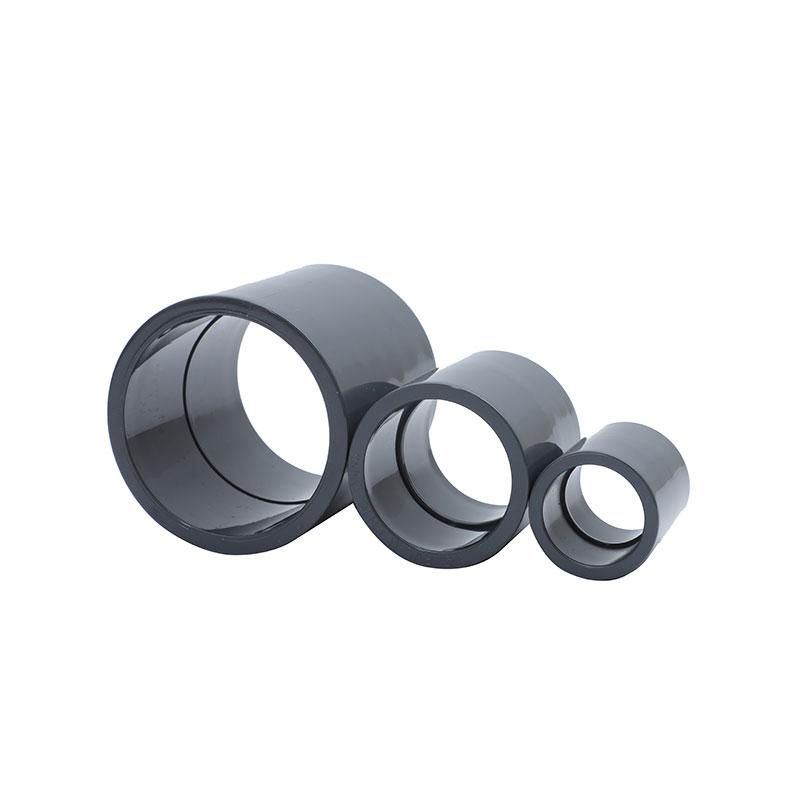
Temperaturempfindlichkeit und Druckwerte
UPVC-Fittings-Buchsefunktioniert am besten innerhalb bestimmter Temperatur- und Druckbereiche. Installateure müssen diese Grenzen genau beachten, um langfristige Zuverlässigkeit zu gewährleisten. Das Material kann bei kaltem Wetter spröde werden und bei hohen Temperaturen weich werden. Für beste Ergebnisse sollte der Bau bei Temperaturen zwischen 10 °C und 25 °C erfolgen. Wenn die Temperatur unter 5 °C fällt, sollten Installateure dickwandige oder MPVC-Rohre verwenden, um die Sprödigkeit zu verringern. Wenn die Temperatur unter -10 °C fällt, sind Frostschutzmaßnahmen erforderlich. Hohe Temperaturen über 40 °C können dazu führen, dass Klebstoffe zu schnell verdunsten, was zu schwachen Verbindungen führt.
Auch die Druckwerte spielen eine entscheidende Rolle. Die Fittings sind für verschiedene Drücke ausgelegt, die Verbindungsmethode muss jedoch zum Rohrdurchmesser und den Systemanforderungen passen. Für Rohrdurchmesser bis 160 mm eignet sich Kleben gut. Für Durchmesser über 63 mm oder Hochdrucksysteme werden elastische Dichtringe oder Flanschverbindungen empfohlen. Die folgende Tabelle fasst die wichtigsten Vorsichtsmaßnahmen zusammen:
| Aspekt | Details und Vorsichtsmaßnahmen |
|---|---|
| Temperaturbereich | 10–25 °C ideal; unter 5 °C oder über 40 °C vermeiden |
| Druckwerte | Passen Sie die Anschlussmethode an die Rohrgröße und den Druck an. Verwenden Sie bei hohem Druck Dichtringe/Flansche. |
| Klebstoffauftrag | Schnelles Verdampfen bei Hitze vermeiden; ausreichend Zeit zum Aushärten einplanen |
| Frostschutzmaßnahmen | Erforderlich unter -10 °C |
Tipp: Prüfen Sie vor der Installation immer die Richtlinien des Herstellers zu Temperatur- und Druckgrenzen.
Bewährte Vorgehensweisen bei der Installation
Eine ordnungsgemäße Installation gewährleistet die Langlebigkeit und leckagefreie Funktion jedes Wasserversorgungssystems. Um optimale Ergebnisse zu erzielen, sollten Installateure die folgenden bewährten Vorgehensweisen befolgen:
- Überprüfen Sie vor Beginn alle Rohre und Armaturen auf Schäden.
- Markieren Sie die Rohrroute mit Pfählen und Schnur, um die Grabung zu erleichtern.
- Graben Sie Gräben, die breit genug für die Installation und die Wärmeausdehnung sind, aber nicht zu breit.
- Entfernen Sie Steine oder bedecken Sie sie mit Sand, um das Rohr zu schützen.
- Bestimmen Sie die Grabentiefe basierend auf Klima, Anwendung und Verkehrslast.
- Warten Sie, bis der Lösungsmittelkleber vollständig ausgehärtet ist, bevor Sie ihn wieder auffüllen.
- Vor dem Abdecken der Rohre auf Lecks prüfen.
- Verwenden Sie für die ersten 15 bis 20 cm steinfreies Füllmaterial und verdichten Sie es richtig.
Installateure sollten Rohre außerdem rechtwinklig messen und abschneiden, die Kanten entgraten und abschrägen sowie die Komponenten trocken montieren, um die Ausrichtung zu überprüfen. Reinigen Sie alle Oberflächen gründlich, bevor Sie Klebstoff auftragen. Fügen Sie die Verbindungen sofort zusammen und drehen Sie sie leicht, um den Klebstoff zu verteilen. Wischen Sie überschüssigen Klebstoff ab und lassen Sie ihn ausreichend aushärten, bevor Sie ihn handhaben oder eine Druckprüfung durchführen.
- Arbeiten Sie immer in gut belüfteten Bereichen.
- Vermeiden Sie Feuchtigkeit während der Installation.
- Lagern Sie Lösungsmittelkleber ordnungsgemäß.
- Niemals die Anschlüsse mit Gewalt zusammenfügen.
Hinweis: Durch Befolgen dieser Schritte können Lecks vermieden und die Lebensdauer des Systems verlängert werden.
So wählen Sie die richtige UPVC-Fittings-Muffe
Die Auswahl des richtigen Fittings hängt von mehreren Faktoren ab. Installateure sollten Rohrdurchmesser, Druckanforderungen und die benötigte Anschlussart berücksichtigen. Für Rohre mit kleinem Durchmesser (bis 160 mm) eignet sich in der Regel eine Klebeverbindung am besten. Bei größeren Rohren oder Hochdrucksystemen bieten elastische Dichtringe oder Flansche zusätzliche Sicherheit. Wählen Sie immer Fittings, die anerkannten Normen wie ASTM F438-23, D2466-24 oder D2467-24 entsprechen. Diese Normen garantieren Kompatibilität und Leistung.
Hochwertige Armaturen aus reinem PVC-Harz und zertifiziert für Trinkwasser gewährleisten Sicherheit und Zuverlässigkeit. Installateure sollten außerdem auf Produkte achten, die den Standards NSF/ANSI oder BS 4346 entsprechen. Diese Zertifizierungen bestätigen, dass die Armaturen für Trinkwasser geeignet sind und strenge Größenanforderungen erfüllen.
Hinweis: Wenden Sie sich an den Lieferanten, um technische Kataloge und Expertenrat zu erhalten und die passenden Armaturen für die Anforderungen Ihres Projekts zu finden.
Sicherstellung der Kompatibilität und der richtigen Dimensionierung
Kompatibilität und Dimensionierung sind für ein leckagefreies System unerlässlich. Installateure müssen die Größen von Muffe, Zapfen und Rohr genau aufeinander abstimmen. Die folgende Tabelle zeigt gängige Größenverhältnisse:
| Sockelgröße | Zapfengröße | Kompatible PVC-Rohrgröße |
|---|---|---|
| 1/2″ Steckschlüssel | 3/4″ Zapfen | 1/2″ Rohr |
| 3/4″-Steckschlüssel | 1″ Zapfen | 3/4″-Rohr |
| 1″-Steckschlüssel | 1-1/4″ Zapfen | 1″ Rohr |
Hersteller entwickeln UPVC-Fittings-Muffen nach strengen Industriestandards und stellen sicher, dass jedes Fitting der vorgesehenen Rohrgröße entspricht. Installateure sollten vor der Installation stets die Kompatibilität prüfen. Präzision in der Fertigung und die Einhaltung von Standards wie BS 4346 oder NSF/ANSI garantieren sichere, leckagefreie Verbindungen.
Tipp: Überprüfen Sie vor Beginn der Installation alle Maße und Standards noch einmal, um kostspielige Fehler zu vermeiden.
UPVC Fittings Socket ist eine intelligente Wahl für Wasserversorgungssysteme. Experten heben diese Hauptvorteile hervor:
- Auslaufsicheres und langlebiges Design
- Sicher für Trinkwasser
- Einfache Installation für jeden Benutzer
- Beständig gegen Korrosion und aggressive Chemikalien
Die Auswahl der richtigen Armatur gewährleistet ein zuverlässiges und effizientes Sanitärsystem.
Häufig gestellte Fragen
Was macht die PN16 UPVC-Fittings-Buchse zu einer intelligenten Wahl für die Wasserversorgung?
PN16 UPVC-Fittings-Buchsebietet hohe Haltbarkeit, leckagefreie Leistung und einfache Installation. Hausbesitzer und Profis vertrauen auf dieses Produkt für sichere, langlebige Wassersysteme.
Kann die PN16-UPVC-Fittings-Muffe hohen Wasserdruck aushalten?
Ja. Die PN16 UPVC-Fittings-Muffe unterstützt mehrere Druckstufen bis zu 1,6 MPa. Diese Flexibilität gewährleistet eine zuverlässige Leistung sowohl in privaten als auch in industriellen Wasserversorgungssystemen.
Ist die PN16 UPVC-Fittings-Muffe sicher für Trinkwasser?
Absolut. Der Hersteller verwendet ungiftiges, hochwertiges UPVC. Dieses Material hält das Trinkwasser für Familien und Unternehmen sauber und sicher.
Tipp: Wählen Sie zertifizierte Armaturen, um höchste Sicherheitsstandards für Ihre Wasserversorgung zu gewährleisten.
Beitragszeit: 09.07.2025


